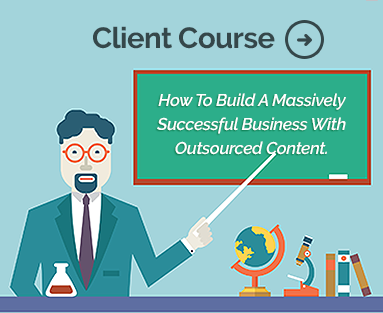Content marketing is here to stay. It delivers great results for startups and long-standing businesses alike, while outsourcing it to an agency leaves you with more time to run your business. Yet there’s some confusion around what content marketing means and whether short or long-form content is the best bet for blog posts.
The truth is, both long and short-form content have their places. Both can offer great results for your business and improve your website.
In this guide, we’re going to take a look at long vs short-form content and help you decide which is the best choice for your business’ needs. Are you ready to get started on your content marketing journey? Then read on!
What Is Short Form Content?
It generally refers to any content that is around 1000 words long or fewer. This article, for instance, is an example. It’s easy to create this content fast and put it on your website.
You may choose to use it when you expect your visitors to be somewhat familiar with your brand and the products or services that you sell. It’s also useful when selling inexpensive products, where a short description is generally advantageous. It also works well for interacting with established clients or qualified leads.
Key Advantages
One of the biggest advantages of short-form content is that it’s a lot easier to read. Visitors to your website might not have the desire or patience to read a 3000-word post, but most of us can read a 1000-word post within a few minutes. This also means that you’ll get your point across to more people, which can help your marketing efforts a lot.
It’s also easy for writers to create, which means that you can have it on your website within hours, potentially. If you order it from iWriter, you can rest assured that you’ll get great content, made fast.
The speed of creation also means that it’s easy for you to post consistently. You could create several shorter posts in the same timeframe as it would take to create one larger one. This matters, as posting consistently can help your SEO a lot.
The Disadvantages
There are a few disadvantages as well. The first and most significant disadvantage is that you may not be able to effectively make your point in such a short article. This is especially true if you need to explain technical or otherwise complex concepts to laypeople.
While great writers can still put a lot of depth into short content, the word limit means that it will never be as in-depth as longer posts.
Another problem is that short-form content doesn’t make Google perceive your site as authoritative in the same way that long-form content does. If you’re posting 5000-word posts on your subject matter, then Google’s algorithm will take that into account when deciding your search ranking.
What Is Long-Form Content?
Long-form content generally refers to any content that is over 2000 words in length. It’s ideal for explaining technical concepts, interacting with new clients, and explaining the benefits of a premium product to your customers.
For an audience who are at the beginning of their customer journey, long-form content offers more information and reassurance than short-form content does. It is also great for B2B sales, as these kinds of customer journeys tend to be longer than a B2C one.
The Key Advantages of Long-Form Content
One of the biggest benefits of long-form content is that it offers you a greater canvas for your keywords. SEO is driven by using keywords that your prospective customers search for, and if you aren’t using them in your content, then you’re less likely to rank highly in the search results.
Due to the length of long-form content, there are a lot more opportunities to use keywords, including long-tail ones. This can be very advantageous for SEO.
The increased length also offers more space for additional backlinks to your pages, which can help improve authority. If you write well-researched content, you can also get backlinks from other authoritative pages, which will help you a lot. If readers come to your site and then stick around to read your entire post, Google will also consider them to be more engaged with your site, which means, guess what, better search results.
Finally, there’s the fact that long-form content shows how much of an authority you are on a topic. Visitors are more likely to become buyers if they think that you know all there is to know about your field.
Disadvantages of Long-Form Content
The key advantage of long-form content, i.e., its length, is also one of the disadvantages. It’s possible that some readers won’t have the attention span to read your long content, especially if they are used to shorter posts.
There’s also the problem that if you create long-form content yourself, it will take up a great deal of your time. This means that it’ll be a lot harder to post consistently and regularly if you depend on long-form content.
Long vs Short-Form: Which Is Better?
As we’ve shown, both long and short-form content have their advantages, yet which is right for your business? To decide which is right for you, you should consider a few different factors:
- Are your readers already familiar with the field? If not, long-form content may be a better bet.
- What do you want the content to do?
- How long do you think the average visitor has to read your content?
- What is your budget?
Answering these questions and referring to the advantages and disadvantages should help you. If you’d like some help putting together a content plan or have any questions about using our services to create content, then please don’t hesitate to get in contact with us.




Comments are closed.